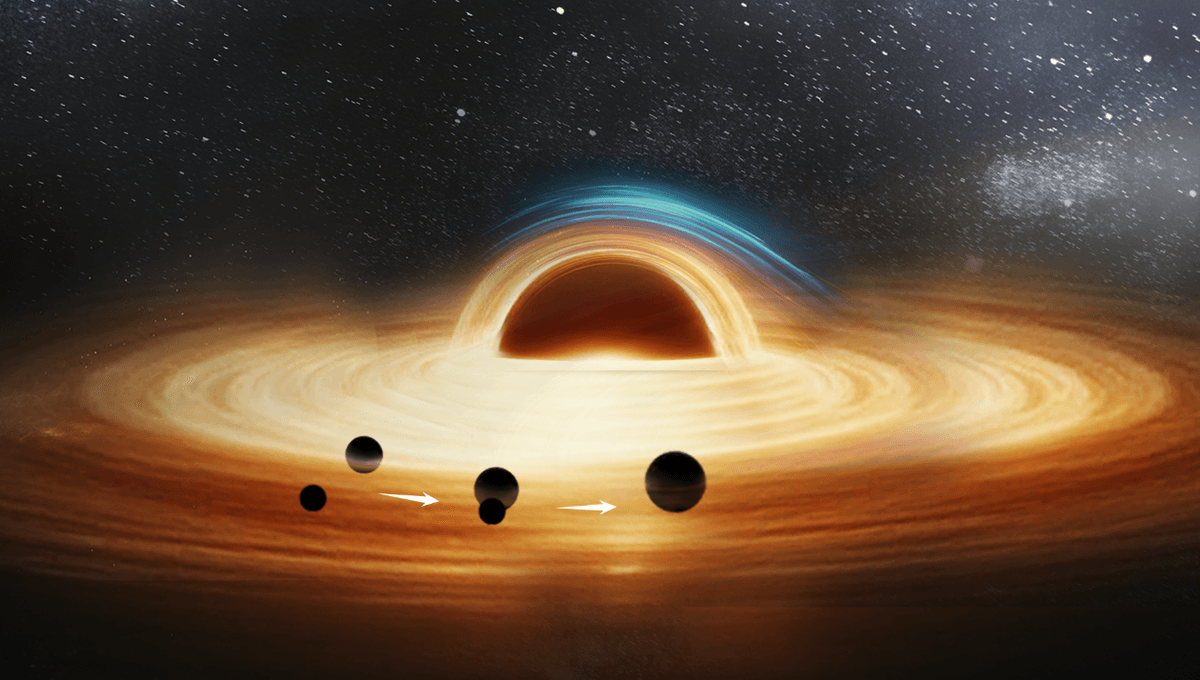In 2019, gravitational wave observatories across the world reported the merger of a black hole of 23 solar masses with a much smaller object, at the limit between the lightest black hole and the heaviest neutron star. New analysis suggests that the collision happened as the two were orbiting in the hot embrace of an active supermassive black hole.
The rest of this article is behind a paywall. Please sign in or subscribe to access the full content.
The event GW190814 was record-breaking for representing the highest mass ratio (almost 10:1), given that the smaller object was just 2.6 times the mass of our Sun. This event came up again as an international team of researchers looked at the possibility of black holes being in groups of three instead of in pairs.
The presence of a supermassive black hole could explain how two objects of such different sizes might have ended up merging. The extreme environment in the accretion disk of such a large black hole would have tugged and pushed at the two, getting them closer and closer together. But that would not be enough if they couldn’t find evidence in the data.
The team looked at what signatures could appear in the gravitational wave signal if two black holes were merging while orbiting a third. The team believes that this would cause a specific line-of-sight acceleration, creating a Doppler effect – like the siren of an ambulance changing pitch as it approaches to you – that could be seen in the data.
The team looked for this signal in several black hole collision events, and in the case of GW190814, they saw something consistent with a linear acceleration. It has a Bayes factor of 58, which is interpreted as very strong evidence for it.
The team found a linear acceleration of 0.002 c s-1 , where c is the speed of light. That is equivalent to over 61,000 times the gravitational pull of the Earth on us, or about 1.4 times the acceleration of a bullet in a 9-millimeter gun.
“This is the first international discovery of clear evidence for a third compact object in a binary black hole merger event,” team leader Dr Han Wenbiao, from the Shanghai Astronomical Observatory (SHAO), said in a statement. “It reveals that the binary black holes in GW190814 may not have formed in isolation but were part of a more complex gravitational system, offering significant insights into the formation pathways of binary black holes.”
Future observations of gravitational wave collisions might reveal even more of these events happening around supermassive black holes.
The study is published in The Astrophysical Journal Letters.
